Have an overgrown Pothos plant? In need of last-minute gifts without a budget? Looking for some green-fingered procrastination?
I got you, friend.
Pothos are some of the easiest (and speediest) plants to propagate.
This post will take you through every step of the process to help you achieve maximum propagation success and create even more houseplants to enjoy/gift away.
Let’s make some plant magic happen!

Terrarium Tribe is reader-supported. When you purchase through links on our site, we may earn an affiliate commission (at no further cost to you). 💜
What is a Pothos Plant?
Pothos is a bit of an umbrella term for several leafy vines, thanks to a long history of (extremely dull) classification drama.
In short, it comprises three of our beloved common houseplant genera and species:
- Epipremnum aureum (e.g., Neon Pothos)
- Epipremnum pinnatum (e.g., Cebu Blue Pothos)
- Scindapsus pictus (e.g., Satin Pothos)
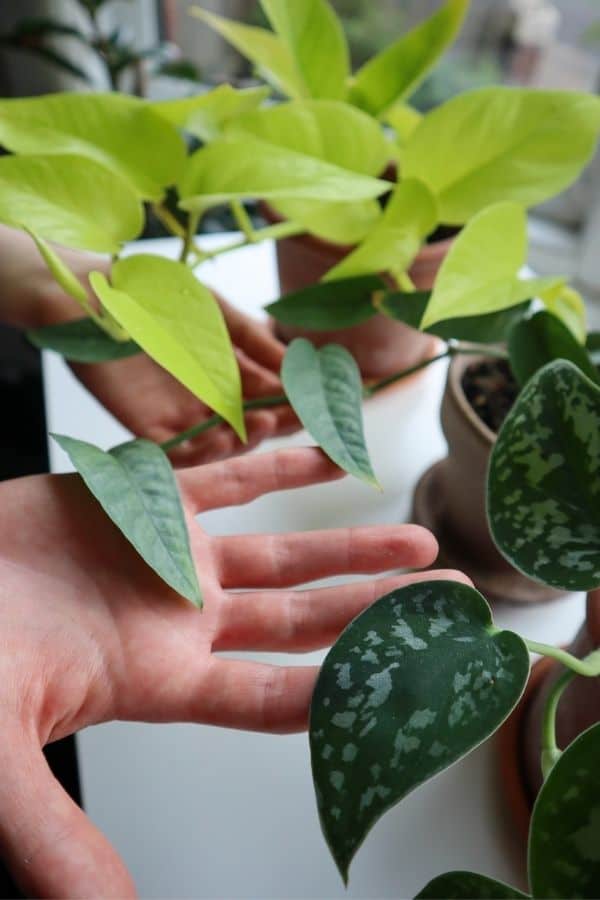
Within these plant families, there are tonnes of stunning Pothos varieties in all colors, patterns, and shapes.
Now, you might be saying, “I have no idea what kind of Pothos my plant is.”
But, the good news is… It doesn’t matter!
The propagation process is exactly the same for each and every one.
So, even if you’re not sure which one you’ve got, grab your parent plant and have a pair of scissors at the ready…
Let’s do it!
Pothos Propagation: Step-By-Step
1| Identify the Leaf Node
While some plants can miraculously sprout roots from half a tattered leaf (I’m looking at you Watermelon Peperomia), Pothos are not one of them.
It can only grow roots if the cutting has a leaf node attached.
So, the first thing you need to do is identify the node.
The node is found where the leaf meets the stem.
You should be able to see an aerial root there, too, which can look like anything from an inconspicuous brown bump to a big fat set of antlers.
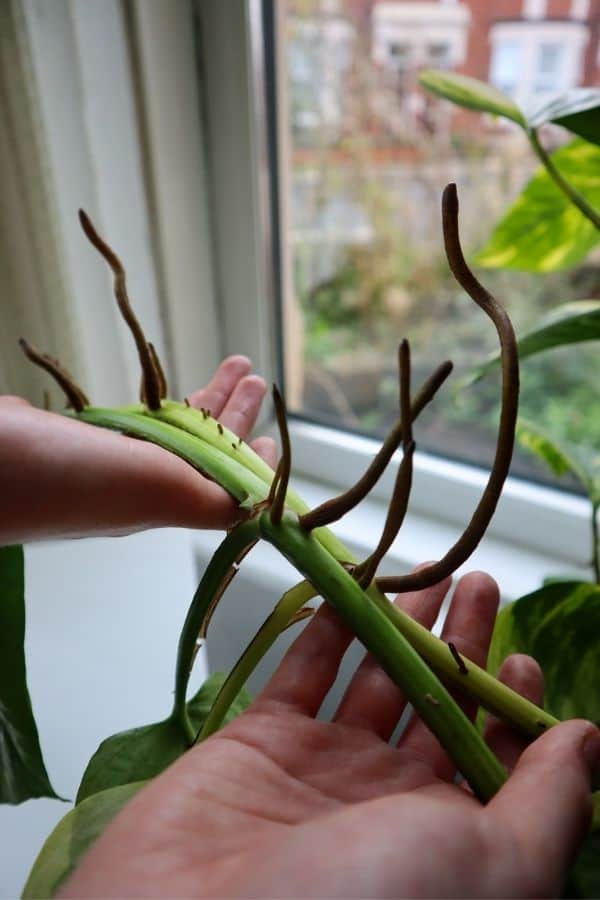
That’s where your root growth will come from.
It’s also worth knowing that trimming your parent plant can stimulate a bushy growth habit (meaning new stems will sprout from multiple nodes), so if that’s not what you’re into visually, then give Pothos propagation a miss.
2 | Snip Your Pothos Cuttings
Once you know where you’re going, grab your healthy Pothos plant, some clean scissors/secateurs and take a deep breath.
You can do this.
I like to wait until my Pothos vine is nice and long and then create several cuttings at once.
Carefully snip the stem on either side of the node, leaving around a quarter of an inch on each side, and discard the stem in between.
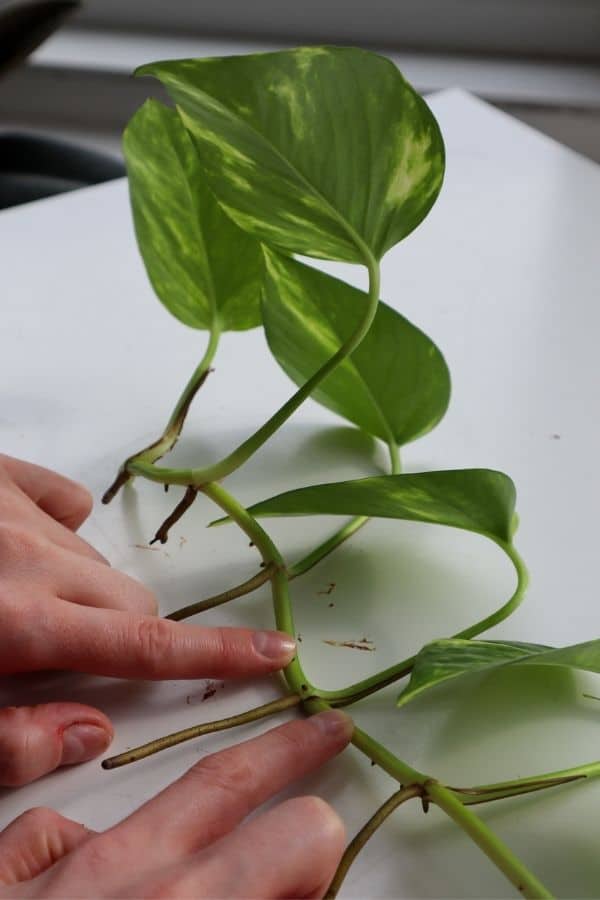
For the most part, I make my cuttings just one leaf long – they really don’t need any more.
However, the newest leaves (closest to the end of the vine) will need a slightly more mature node to support them, so I keep around 3 leaves at the end.
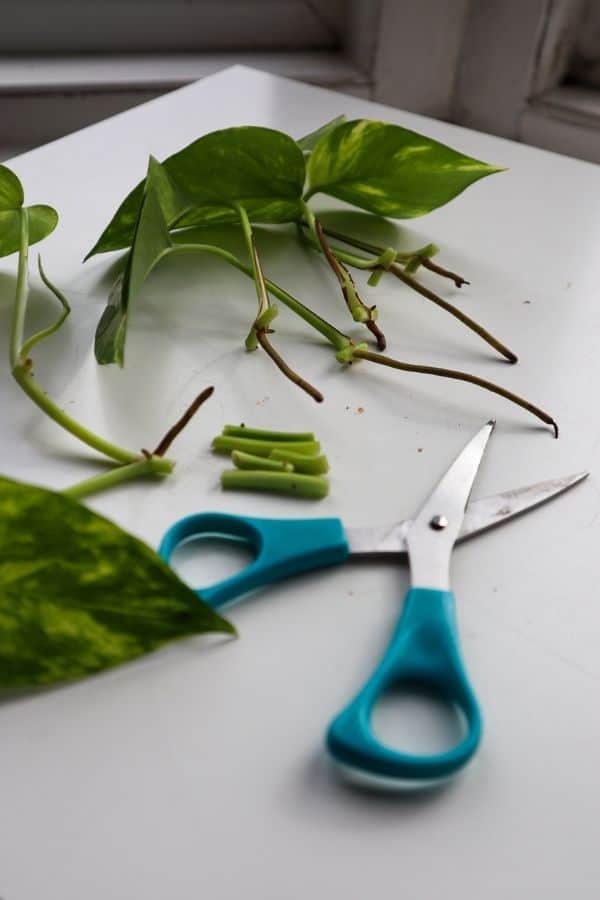
3 | Root Your Cuttings (Using Pothos Propagation in Water or Soil)
Simply whack your cuttings in a glass of water. Any small glass, vial, cup, or jar will do just fine.
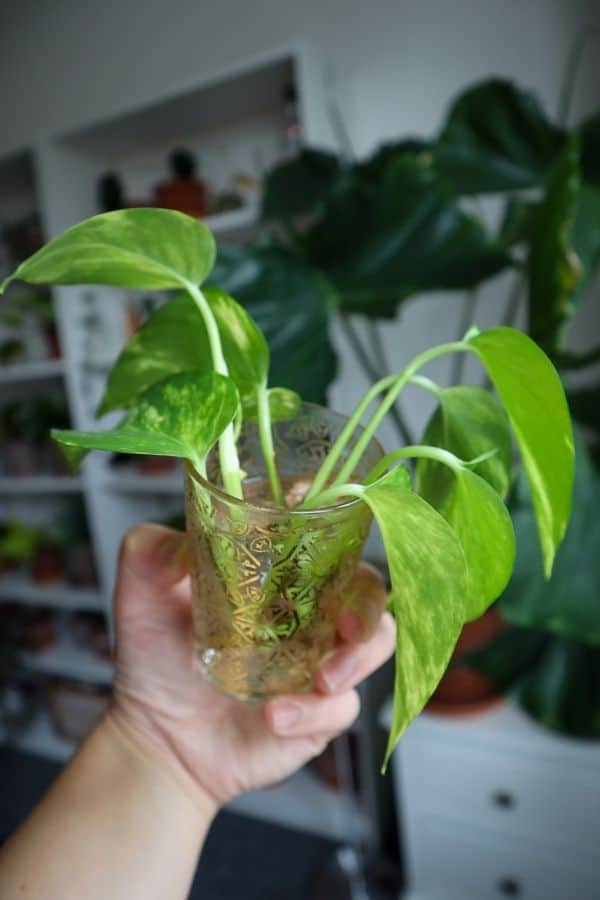
And fresh tap water will do the trick, Pothos are famously unfussy.
Then just stick it in a bright spot where it gets lots of lovely indirect light.
Easy-Peasy.
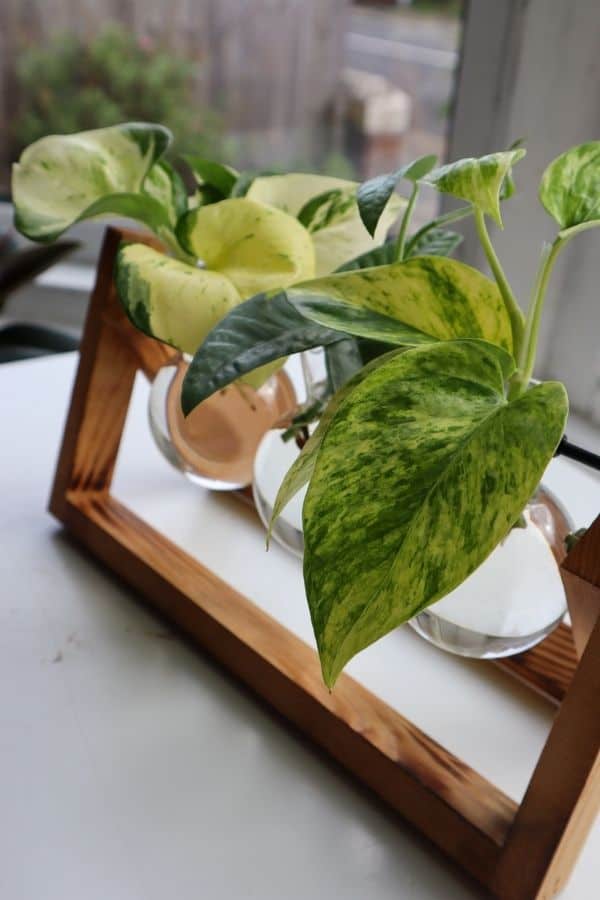
👉 Take a peek at the cute range propagation stations on Etsy.
Can I propagate my cuttings in soil?
You can… But propagating in water is so effective! And easier!
In soil, it takes a little longer, and you need to keep the soil moist (but not soggy, or you could risk root rot before they’ve even properly grown).
Plus, I like keeping an eye on root development. I’m nosy; what can I say?
4 | Have Patience, Dear Child
Like a parent whose teenage children are moving out, it’s time to let them stand on their own two feet and figure it out for themselves (at least for the most part).
So sit back, relax, and watch your plant babies grow and flourish.
Roots will begin to develop and you’ll see new leaves starting to sprout.
As a rough guide, it should take around 3 weeks for roots to properly form in the summer months and around 6 weeks in the winter months.
It’s also a good idea to wipe down the glass and add fresh water every week or so.
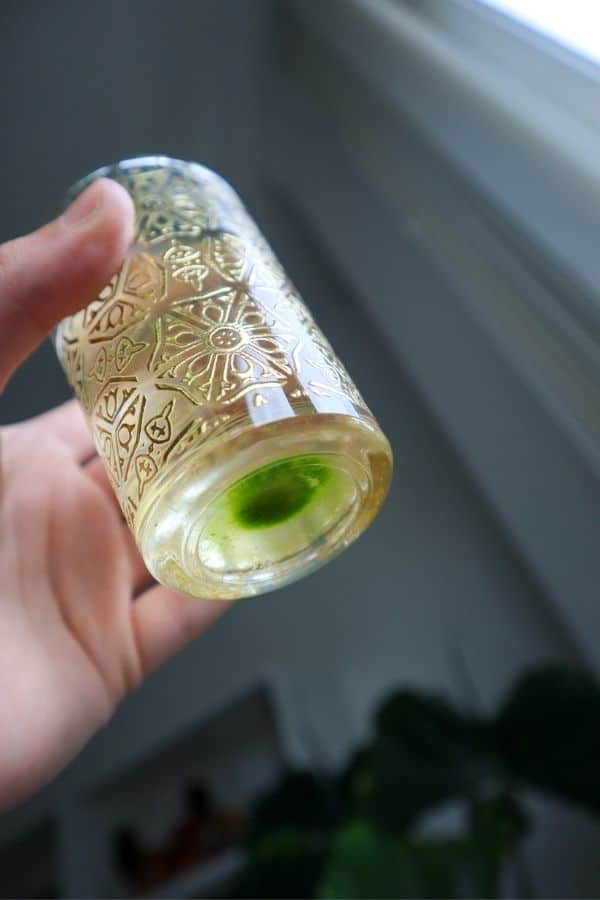
5 | Plant up Your Rooted Pothos Cuttings
When your roots are several inches long (ideally with baby roots coming from it, too), and you have a new leaf well on its way, it’s time to plant your cuttings in the soil mix.
Make sure you have a pot with drainage, and use a nice chunky soil mix.
You could:
- Plant them all up together to create a new, full-looking plant
- Plant them separately and gift them to loved ones/take them to a plant swap
- Plant them back with the mother plant to create a monstrously bushier plant
Pothos are aroid plants, making them toxic if consumed, so please don’t gift to someone with young children/pets without them knowing.
Now It’s Your Turn
Congratulations – it’s a beautiful baby Pothos! You must be so proud.
How have you found the process? Let me know in the comments.
I’m particularly curious to know if anyone prefers Pothos propagation in soil? (and why).
If you need any additional help caring for your new plant, head over to our Terrarium Plant Index, where there are loads of variety-specific care guides to get your hands on.

Is it good to leave long Ariel roots on your vine
Of course 🙂
Hi, I have aerial roots on mine too. Could it just be propped in soil or is it better to have them in water regardless? Thank you.
I always like to get some extra root growth in water before planting into soil for good measure, but it’s such a hardy species I’d be very surprised if it didn’t do well being planted straight into soil!